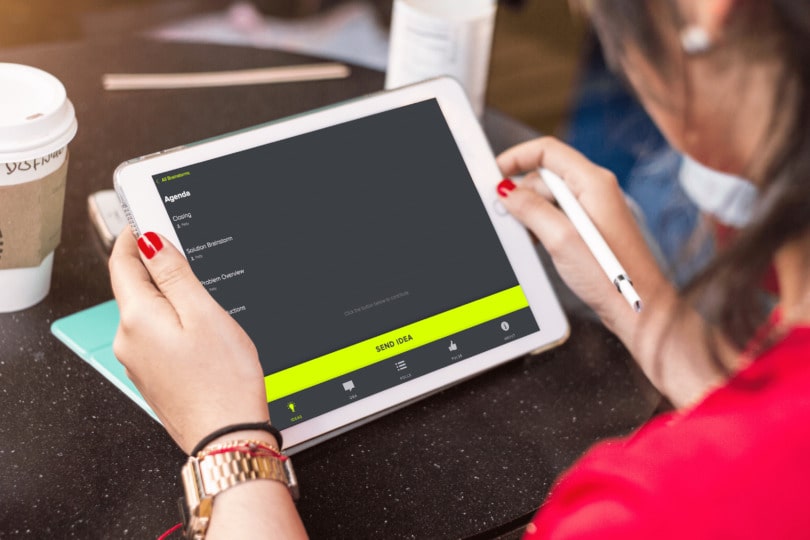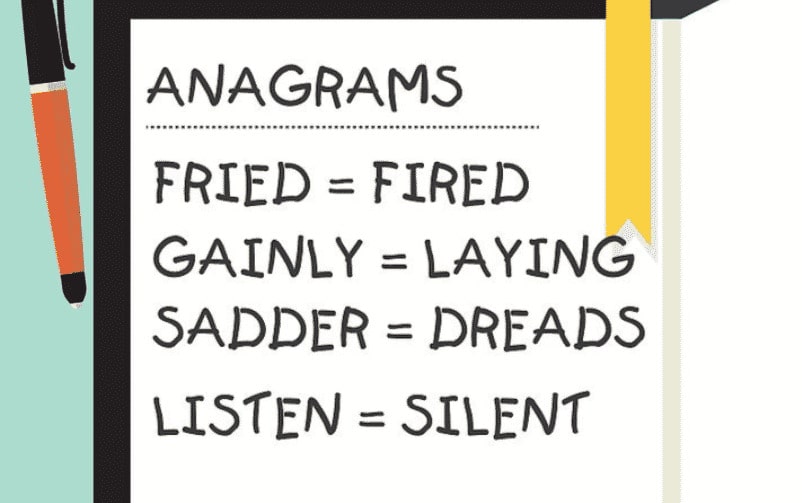Meetings and conferences can be painfully tedious and dull. Learning how to make powerpoints more engaging is on everyones agenda. So much so that the phrase “Death by PowerPoint” has made it into our lexicon. According to Thomas Sowell, an American political economist and commentator, “People who enjoy meetings should not be in charge of anything.”
But if the problem with meetings is that they tend to be boring, the solution lies in finding ways to better engage and entertain your audience. You probably know the feeling of sitting in a meeting, trying to pay attention while one person drones on for an hour.
Even if the purpose of the meeting is to train, disseminate new developments, or even get everyone up to speed on weekly goals, engaging your audience creates a motivation to pay attention.
That’s why interactive presentation games are a great way to re-energizing meetings by involving audiences in the presentation. Interactive presentation turn passive listeners into active participants. Audience participation games also allow the attendees to learn new skills, think of solutions within a short time period, and solve problems together.
MeetingPulse’s audience participation tools equip your team with the tools and resources to create engaging events. With that in mind, here’s our guide to a few popular interactive presentation games.
20 Interactive Audience Participation Games
1. Project Jeopardy

This game is designed to make the presentation of reports more fun and interactive. The lead person on the report creates cards that have answers from the report.
For example, the card reads “25%.” The rest of the team is supposed to ask the correct question corresponding to the “25%” answer on the card. The question could be something like, “What was the company revenue growth for the quarter?”
How to play: Give everyone the URL to your MeetingPulse meeting. Display the question on your screen and create multiple choice answers or leave it open-ended. The answers will pop up on the administrator’s screen in real-time, and you can share the answers to see how many people got it right.
2. Idea Box Game

The Idea Box game is excellent for brainstorming meetings where employees can share ideas about a project or product. It helps get the creative juices flowing and might even lead to some usable prototypes. Instead of having one speaker after another speak about their idea, having a team create an idea box creates a space for collaboration to further spark innovation.
How to play: Use the MeetingPulse brainstorming tool to have teams vote and collect feedback about the products. Have each attendee log in to your MeetingPulse link — a virtual Idea Box. Give small groups thirty minutes to brainstorm, then allow submissions.
At the end of the exercise, each team should have the product name, features and functions, marketing taglines, and other vital product details.
Once each team has completed their box they’re invited to share it with the rest of the team who finally vote for the best box. Their ideas will appear on the screen right away, and participants can upvote or downvote in Reddit-style fashion and even submit emoji reactions.
3. The Introduction Game

This game is ideal for a new group of team members meeting for the first time on a mutual project or new hires joining a team. Give the new hires a chance to introduce themselves in an unforgettable manner.
How to play: Ask the new members to bring a personal item or a favorite song. During the meeting, introduce them by letting their song blare for a few minutes on the sound system and then ask them to say something about themselves. If you’re using the personal item, ask them to talk about the item and what it means to them.
4. The talking stick

This activity makes sure that anyone who has a contribution not only gets to do so, but also that they get to speak uninterrupted. Using the talking stick is a great, rapid-fire way to focus the meeting on deep and meaningful contributions.
How to play: Form a circle and make sure everyone’s seated. Before the discussion begins, everyone should agree that the moderator has the power to choose whoever speaks next. Once a member finishes talking, they should put the stick back in the center for the next person.
Use the MeetingPulse audience feedback capability to gain insight right away. Choose up to four emojis and allow your audience to react as they listen to new ideas.
5. Telephone game

The telephone game is used typically as an ice breaker or to liven up a group after a couple of mind-numbing presentations. While it doesn’t really work with a very large group, a sizable number like 10 to 15 people is just right.
How to play: The meeting leader whispers the latest company marketing strategy used to the person on their left who is then supposed to relay the message to the next person and on and on until the last person gets the message.
The last person then gets to tell the rest of the team the final message, and you can compare it to the primary message from the lead.
6. The trivia competition

You can use this game to test the attendees’ trivia knowledge of the company or of general business trends. Create a trivia competition where the members play for points and the winner gets a prize. Project the points for everyone to see the winner.
How to play: Formulate questions related to the company and use them for the trivia test. You can use MeetingPulse to create the questions with its live Q&A session software platform capabilities, and set the timer to begin the game together. To add an extra touch of fun, include images with your multiple choice questions. Visuals add to the level of engagement and give your meetings an extra edge.
7. Fill in the phrase

Check out Meeting Pulse for Cool and creative ways to make polling questions and Quizzes!
This game requires participants to fill in blanks on a survey or report. The survey or report should not be complete until the end of the presentation. This game rewards audiences for listening, and you can even provide some sort of prize.
How to play:Create a report for attendees that has blanks. As you continue with the presentation, invite them to fill in the blanks from the information you are giving. Not only does the audience remain engaged, but they retain crucial information better.
MeetingPulse integrates with Powerpoints, so you can use our single answer polling feature to play this game and display the results directly in your PowerPoint presentation.
8. Word of the day

Have a word of the day game as part of your presentation or meeting. It can be a phrase or a word.
How to play: The presenter should weave the word or phrase into their presentation and the audience acknowledges its use by shouting back. The word must come from the team and not the presenter. This activity keeps everyone alert. Sometimes shouting can be distracting in the middle of a meeting.
In this case, use the MeetingPulse emoji feature, and everyone can submit ? when you use the word “key learnings.”
9. The 20 questions game

You get 20 questions to help you identify a picture that you can’t see, but the audience can. The audience can only lead you with yes or no questions. Use this game to liven up the audience.
How to play: The audience will choose a picture that you can’t see. Have someone submit a photo and display it on the MeetingPulse user dashboard. Get blindfolded and begin to ask questions regarding the picture. You get only twenty questions to get it right.
If you’re an advertising agency, you can use this test your employees’ memory and see if they remember what you worked on. To keep track of all the questions and responses, have the audience choose “yes” or “no” by using a live audience polling tool instead of having them shout it out.
10. Call and response

This game keeps the audience focused. The leader in the meeting calls out a phrase randomly during their presentation and the audience responds to it.
How to play: Agree on the action to be taken every time the phrase is called out. The second the presenter calls out the word, your audience can dance, clap or just rise and seat. Alternatively, they can respond with a phrase, word, or an emoji using MeetingPulse.
11. What would I have done?
In this game, ask each member of the team what their alternative career would be. The point of the game is to open up to each other and foster conversation.
How to play: Each member writes down their alternative career and waits their turn to reveal. The audience collectively asks “What would you have done?” and the selected member responds explaining why they chose that alternative. This is another great game you can play virtually, especially if you’re working with a big team.
With MeetingPulse, you can find out everyone’s alternative career and even get some statistics.
12. Fabulous flags

In this game, team members draw things that matter to them on their flag. This is known as the personal flag game, and it’s an excellent ice breaker activity.
How to play: Everyone gets 10 minutes to draw objects or symbols that represent something meaningful in their lives. Each person gets two minutes to explain the items on their flag.
13. Botticelli

Similar to 20 questions, this game also tests your trivia. You keep in mind a person, place, or thing, and the audience has to guess. The game is a bit more complex because the player can talk back to the audience and distract them from the name.
How to play: The audience asks leading questions to which the player responds with a yes or no. If they ask a specific question like “Does the celebrity’s name start with B?” then the player can respond with “It’s not Brad Pitt.”
This game is logistically easy to plan because all you need to do is formulate the poll questions and integrate them into your PowerPoint with MeetingPulse.
14. Candy introductions

This is a game that allows people to get to know each other while enjoying some sweet treats. It’s excellent for training sessions where participants are complete strangers, providing general topics for introductions that employees can elaborate upon further.
How to play: The participants choose different types of candy from a bag and use each to represent different topics about themselves during the introduction. They can talk about family, career, hobbies, unexpected characteristic and dream destinations.
15. Crazy job interview

In this game, one participant tries to convince the others why they would be the best for a certain job. They have to expound on qualities given by another player and how those qualities make them a good fit.
How to play: The participant is given a career, like a supermodel. Then they are given random phrases like “angry with the queen” or “intellectually incompatible” and they have to use these phrases to explain why they would be great at being a supermodel.
16. The elimination game

The elimination game helps participants to get to know each other, using a series of questions to find out the most common and most rare similarities amongst people within your company.
How to play: The whole room is asked to stand up. The leader then asks elimination questions like “how many are attending this conference for the first time?” That group gets to sit down. The next is “remain standing if this is your fourth consecutive attendance.” The rest of the group sits down. And the elimination questions continue.
17. Would you rather

This is a fun game to liven up the room, giving participants two choices of something they can do. They have to choose the lesser evil.
How to play: The player is given a question with two very bad or very good outcomes. For example, if the employees are afraid of heights, ask, “Would you rather go sky diving or bungee jumping?”
If you want to play this game with a large group of people, you can use MeetingPulse to get answers in real time. This game can also provide valuable insight for you. For instance, you can ask, “Would you rather have a breakfast spread or small desserts for our next meeting?”
18. Anagrams

Think up a word and have everyone else try to figure it out. Expect some hilarious answers as everyone chips in.
How to play: Jumble up the letters but ensure that they create a five or six letter word anagram when correctly aligned. Only the presenter should suggest the word, and the activity should be timed. People can submit their answers live on MeetingPulse.
19. Two truths and a lie

The players get to tell two truths and one lie about themselves and the audience deciphers which one is the lie.
How to play: The player chooses a topic, like “career.” They tell two real facts about their career and one lie. The audience then decides which statement is false and why they believe that.
20. Choose the Agenda

In this activity, the participants choose the agenda of the meeting instead of being told what it is. This allow them to address burning issues.
How to play: Participants are invited to submit their agendas, which are shared by everyone and then voted on. The one with the most votes becomes the main agenda for the meeting. This gives participants control over the meeting as well.
You can use MeetingPulse’s brainstorming tool with the upvoting feature for this!
Final Thoughts
Now that you know some of the best interactive presentation games, you’re ready to host your next event with new and creative ways to keep your audience engaged. MeetingPulse is a great tool and resource for you to make your presentations more memorable and — dare we say it — fun.






